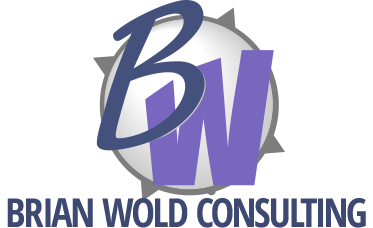One of the crucial things I cover in my Web 101 for Business seminars is an overview of the development process for building a Web site from scratch. (Those of you used to project management life cycles will recognize the basic Plan > Develop > Test > Implement > Evaluate project cycle.) In the seminar, we cover each a bit. Here, for brevity, we’ll barely hit the main points.
First, a Plan: If you don’t know what you’re aiming at, how will you know if you hit it? Spend some time in this phase, and you’ll have better results.
- How will this help the business? (Save money? Increase revenue?)
- What’s my budget? How much time do I have to invest?
- What are my specific goals?
- What are my competitors doing? (what’s working — and what’s not working…)
- Who is my (specific) audience? What do I know about their needs/wants/preferences?
- What are the relevant marketplace trends and how can I get ahead of them?
- How will this integrate with my current business functions?
- How will I promote this site?
- How will I keep it all up-to-date?
Step 2: Develop Your Web Site
- Register a domain name (or names) and choose a Web host. Most people do these at the same time and through the same vendor, but it isn’t necessary. In fact, I recommend grabbing domain names early in the planning process, and then setting up the actual Web hosting when you’re ready for it.
- Design and build your site. Sounds easy, doesn’t it? You might hire somebody for some or all of this, or you might do it yourself with in-house staff. This is the exciting part, because all your planning pays off. Here’s a tip: build in some extra time and budget for surprises — even with careful planning, often when you see the first real product you’ll have an inspiration. Good ideas that will help the bottom line should be encouraged. Just be careful not to lose sight of the initial project scope.
Step 3: Test, Test and Test Again. You’re almost done and you’re tired. You just want to launch the durn thing, right? Wrong. If there’s a problem, it’s better if you find it before the ad campaign starts.
- Test your technologies to be sure they work.
- Check the pages in various Web browsers, computer platforms, display sizes, lighting conditions, download speeds, etc.
- Test your backup/disaster recovery plan.
- If you make any changes, retest carefully — sometimes last-minute changes will create new problems.
Step 4: Publish & Promote. Launching the site is usually easy — just publish the pages, etc. to your production Web site with the Home Page correctly named (as index or default). Now congratulate yourself, but not for long — ’cause there’s more work to be done.
Promotion is a major consideration in Web site strategies, and it deserves careful planning all on its own (probably a future post, so check back — meantime, see my post on Search Engine Basics). Even if you have a built-in audience, your promotion efforts will likely make a crucial difference in the success of the site.
5: Evaluate & Maintain. You should constantly monitor your site’s effectiveness, survey your customers (and complete strangers), review your competition, and track the effects of your promotion efforts. Likewise, maintaining a current site should be obvious — but we’re all busy, and if you don’t add regular updates to someone’s job description, it’ll quickly go south.
